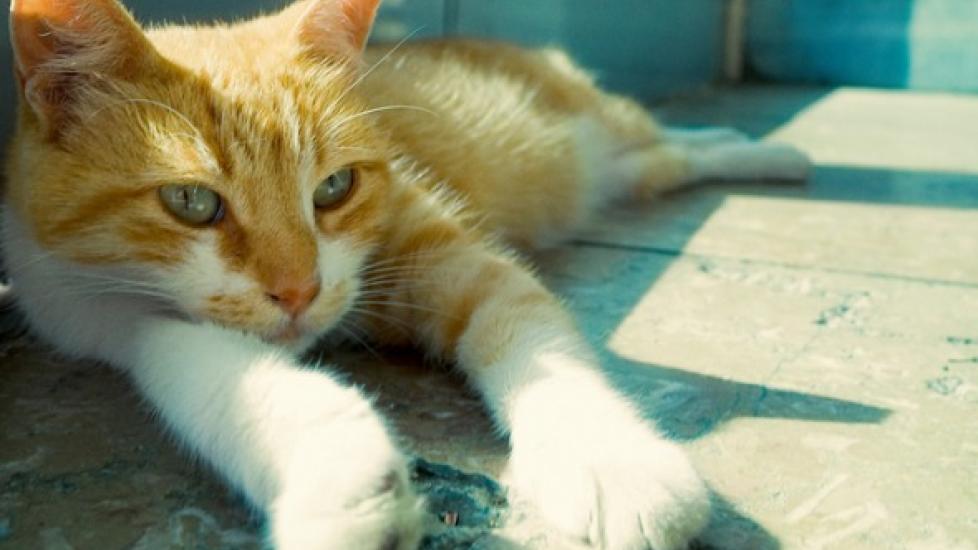Can Street Cats and Stray Cats Become Pets?
Image via iStock.com/byakkaya
Reviewed for accuracy on October 22, 2018, by Dr. Katie Grzyb, DVM
By Nancy Dunham
Is there a stray cat hanging out outside your home? Or slowly spending more and more time in your yard? You might very well have been adopted by a local street cat and are now probably asking yourself, “Can you turn a stray cat into a house cat?”
Yes, that stray cat or alley cat can become your beloved house cat, but there are some caveats you should consider.
First, understand the difference between a stray cat, an alley cat and a feral cat. It’s often impossible to tell at first glance. Both types of cats may seem skittish when you first approach them.
So, what’s the difference? Feral cats are wild and not used to people or domesticated. Stray cats and some alley cats have often had socialization and may have even been neutered and received health care. These distinctions can be critical for the health of your other pets and family members.
Domesticating Feral Cats
Dr. Ann Hohenhaus, DVM, DACVIM (SAIM, oncology) at The Animal Medical Center in New York, urges extreme caution when attempting to turn a street cat into a pet. “Feral cats are likely to have some health issues. Stray cats can too, of course,” she says. “But feral cats have lived outdoors and likely haven’t had any health care.”
Street cats may have serious illnesses that can spread—ringworm, feline leukemia, rabies and other infectious diseases can infect other pets and humans.
“If you adopt a feral cat, you are setting yourself up for heartbreak,” said Dr. Hohenhaus. “”I am not saying you shouldn’t ever take a feral cat [into your home] but think carefully about it first.”
Pet behaviorist Pamela Uncles, Companion Animal Behavior, a practice in the Washington, DC, metropolitan area, adds that behavioral challenges may abound.
“I don’t think you shouldn’t take them. I think you should be informed,” she says. “You need to know the risks going in. That’s the bottom line with everything.”
Taylor Truitt, CEO and founder of The Vet Set, Brooklyn, New York, says that feral cats might be best cared for outside as community cats. “If cats aren’t socialized by 16 weeks of age, it usually doesn’t go well,” she says.
“I have owners who say they have feral cats as pets, but they feed the cats outside,” says Truitt. “The cat is never in the house….It’s tough to catch a feral cat, and when you do, they are more afraid than anything….I always say don’t do it.”
Vet Recommended Health Support
- Feliway Optimum Enhanced Calming 30 Day Diffuser for Cats$29.99Chewy Price
- Purina Pro Plan Veterinary Diets FortiFlora Powder Probiotic Digestive Supplement for Cats, 30 count$30.99Chewy Price
- Purina Pro Plan Veterinary Diets Hydra Care Liver Flavored Liquid Supplement for Cats, 3-oz pouch, case of 12$14.99Chewy Price
- Purina Pro Plan Adult Sensitive Skin & Stomach Lamb & Rice Formula Dry Cat Food, 7-lb bag$28.08Chewy Price
Adopting a Stray Cat
Generally, stray cats—those that have had basic human socialization—may easily adapt to home life and form bonds with people.
Stray Cat Health
And unlike feral cats, strays are often fixed and have had some medical care. So you’re generally not starting from the beginning with major medical expenses. That doesn’t mean you shouldn’t take your new friend to the vet. Always take a new pet to your veterinarian for a checkup for any vaccines they might need or health issues you need to address.
Make Gradual Introductions
Cats brought into the home should be secluded from other animals, even after their vet visit, says Dr. Truitt. That will allow them to adapt to the sights, sounds and smells in their new environments. You and others in your home might be used to the sound of the dishwasher or doorbell, but new pets aren’t.
You may want your new cat to become best friends with your current cat or other pet. That can happen if you slowly introduce them. For first meetings, Uncles recommends that you keep it to just a few minutes long. Each day, allow the pets to see each other for longer periods of time, and allow them to gradually interact with you.
Allowing cats to see each other for short times, such as through glass doors, is another way to begin to introduce them. But depending on the stray cat's background, she may not acclimate as you would hope, says Uncles.
Pet Supplies for Bringing Home a Stray Cat
If you are taking in a stray cat, here are some supplies you should have on hand:
- Litter Boxes. When cats have lived outdoors they often must be reintroduced to using litter boxes. Dr. Truitt says that it’s a wise idea to have one on each floor of your home.
- Cat Toys. It’s a great idea to have a few cat toys for your new kitty to play with to keep them mentally and physically stimulated. In the beginning, keep the new cat’s toys separate from those of your other cat or pet, advises Dr. Truitt. Try different types of toys, like cat feather wands, interactive laser pointers and toy mice. Playing with your cat is a great way to build trust and strengthen your bond while also providing a healthy outlet for their exercise needs.
- Cat Scratchers and Trees. Some cats prefer to scratch vertically, while others enjoy horizontal scratching. Buy a few different types of cat scratchers so you can discover which your new cat prefers, says Uncles. You can also get something that offers both options and gives your cat a safe, high place to go to—a tall cat tree. Don’t assume that your new cat will have the same cat-scratching preferences as your current or previous cat.
- Catnip. Some cats find it appealing, says Dr. Hohenhaus, but about 25 percent of cats aren’t affected by it. But don’t worry—there are other safe and healthy catnip alternatives. Here are some recommended by Dr. Hohenhaus:
- Silver Vine (Actinidia polygama)
- Tatarian Honeysuckle (Lonicera tatarica)
- Valerian (Valeriana officinalis)
- Calming Aids. There are some natural cat calming products you can discuss with your veterinarian when bringing any new cat into the household—especially a stray or feral cat. Cat pheromone diffusers and cat calming treats can be helpful if used correctly.




